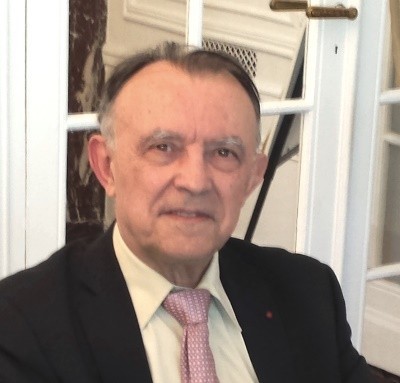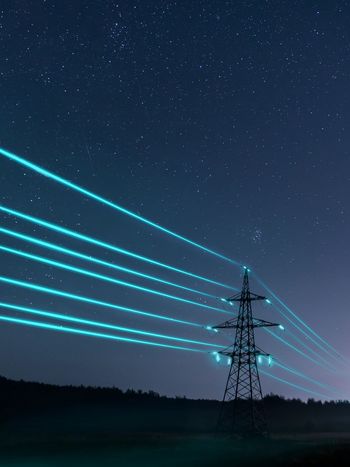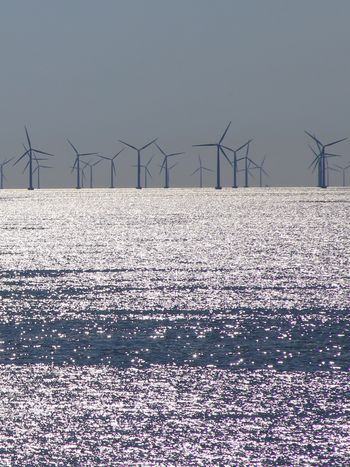The french wholesale electricity market at the core of energy challenges
At a time when our fellow citizens are experiencing from a sharp rise in energy prices and our country is wondering about the future of its energy mix, the electricity "market" is at the core of debates, even polemics. In the 1970s and 1980s, France invested massively in nuclear power to protect itself from the erratic fluctuations in the price of fossil fuels; how can it be that we are once again so dependent on the price of fossil fuels, even if it is now more gas than oil, at a time when the decarbonisation of energy is more than ever on the agenda?
It is essential to understand this paradox if the major investments in electricity generation that will be needed in the coming years are to be effective from the point of view of the bills paid by the french customers.
André Merlin, a major player in the evolution of the french and european electricity sector, was kind enough to help us in this understanding of history and to sketch out paths for the future.

Interview with André Merlin, Honorary Chairman of RTE, Former President of CIGRE
by Jacques Horvilleur and Gérald Sanchis
1986-2006: The creation of a french electricity market
At the beginning was the Single European Act, adopted in 1986 and implemented from 1 July 1987. Its objective was to create a genuine internal market within the European Economic Community (EEC), now the European Union (EU), in all sectors where this was possible. Within this framework, a European directive specifying the principles and modalities of an electricity market was adopted in 1996. It goes beyond the European Union, since countries such as Switzerland and Norway are part of it.
The model adopted is inspired by the electricity market model already implemented in the United Kingdom and Scandinavia. The rule of third-party access to the grid results from this directive, with each final customer being able to choose their supplier. This leads to a split between what is put out to competition, generation and supply, and what remains a natural monopoly: the transmission and distribution grids.
During the preparation of this directive by the European Commission, the french administration tried, but in vain, to oppose it, preferring the single buyer model. This European directive was only transposed into french law in February 2000. Immediately after the adoption of the french law, the Electricity Regulation Commission was created in March 2000 and RTE, the french transmission operator, was created on 1 July 2000. This commission became the Energy Regulation Commission (CRE) when the gas market was created two years later.
Since its creation, RTE has combined the management and control of power system with the maintenance and development of electricity transmission infrastructures. However, EDF's management would have liked to make RTE a "light" operator, without the infrastructure, like what had been done for the french railways, which had then shown their limits. The rapporteur of the law had understood the interest of a "heavy" transmission system operator, seeing it as the preservation of a public electricity service.
When EDF's status was changed in 2004, the Minister of the Economy and Finance suggested that the name RTE be replaced by EDF Transport in order to emphasise the fact that RTE was part of EDF. However, Loyola de Palacio, Vice-President of the European Commission, heard by the Senate, expressed her reservations about this proposal, considering that it was not a good idea. The compromise was then to retain the commercial name RTE and the legal name RTE EDF Transport. Two years later, the name EDF Transport disappeared, once the legal split between EDF and RTE was completed.
Very soon after the creation of RTE, at the request of the regulatory commission and its Chairman, Jean Syrota, RTE and Euronext created the power exchange (PowerNext) in 2001. With PowerNext, the main market tool was set up in France in 2001. Customers had the possibility to sign bilateral contracts with the suppliers of their choice, or to buy power on the market through the exchange. This power was purchased in hourly steps, the day before for the day after. This mechanism provided a price reference, which was useful for negotiating bilateral contracts.
To this has been added a market, which has been less talked about, but which is very important: the balancing market. This is a market with a single buyer, RTE, which buys generation reserves from potential suppliers in order to deal with contingencies, both on demand and on generation, 24 hours in advance. The call of reserves is necessary to deal with the differences between what was forecast 24 hours in advance by the supplier and what is actually achieved in real time. This difference is invoiced by RTE to suppliers who have not met their commitments, at the price purchased by RTE on the balancing market. This is a kind of blank operation for the transmission system operator. The players have been quite satisfied with the operation of this exchange and the regulator has never made any complaints.
The mechanism set up by the exchange takes supply offers at each hour in the order of increasing prices, which is called the merit order, until demand is satisfied. At that point, it is the price offered by this last supply offer that makes the market price. It is a sort of sale at the marginal price. In addition to this spot market, i.e. the day before for the next day, a forward market was quickly set up allowing players to anticipate by buying electricity over a period of up to three years. Beyond three years, there is no purchasing mechanism.
This market cannot therefore define what an electricity mix can be over a 10- or 15-year period. The European directive, and more precisely its transcription into french law, obliges not EDF as before, but the State, to define the future energy mix through the PPE (Multiannual Energy Programming), on the basis of the provisional balances established by RTE.
The coupling of European markets between Member States, from 2006
Within the European Union, there is not only one market, but one market per member state. The first coupling was carried out on the initiative of RTE in 2006, between the French and Dutch power exchanges. This led to the creation of a power exchange in Belgium.
Thanks to this coupling, when forecasts are made the day before for the next day, the optimal exchanges between the different countries are defined at the same time, taking into account the commercial interconnection capacities between the different networks. This leads to the following: an exporting country, as is very often the case in France thanks to its nuclear power plants, will offer attractive prices to the importing country on the other side of the border. There are two possibilities: either this export goes up to the limits of the commercial interconnection capacities, in which case there is a decoupling of prices, or, if the limits are not reached, the price is the same on both sides of the interconnection. It should be noted that the "commercial capacity" of interconnection must be less than the technical capacity of the interconnection facilities. This is because system operators need a reserve of exchange capacity in case there is an outage on their network that requires them to call on reserves from neighbouring countries. This market coupling was then extended to a large number of Member States, including Germany, Italy and Austria. The Powernext electricity exchange then merged with the German, Austrian and Swiss exchanges. This group is called EPEX (European Power Exchange).
Those who are currently concerned that electricity prices are spiralling out of control are blaming a single European electricity market for this. This is not the case. If the price of electricity in France is rising sharply, it is because in periods of peak consumption, France is no longer an exporter. It then imports electricity produced from coal or gas by its neighbours. As a result, the price on the stock exchange increases accordingly.
The 2009 European directive: the "3 times 20" in 2020
To tackle global warming, the European Union has set itself ambitious goals for 2020: to reduce greenhouse gas emissions by 20% compared to 1990 levels, to achieve a 20% share of renewable energies in the European energy mix, and to achieve energy savings of 20%.
In order to integrate renewable energies into the electricity market, the European Commission has granted a derogation from the rules of competition for these means of production by considering them as a priority for satisfying the demand for electricity in each Member State. These renewable energies benefit from a regulated selling price, in a way an obligation to buy by the electricity exchanges. This is in fact a subsidy to these energies. In France, the costs resulting from these subsidies have so far been integrated in the form of taxes in the Public Electricity Service Contribution (CSPE). Initially, this was applicable to all customers. But very quickly, following the example of Germany, France prioritised the burden on domestic customers, but to a lesser degree than in Germany because the development of renewable energies has been less significant in our country.
The consequence of such a mechanism is that negative market prices will appear when the supply of renewable energy exceeds demand. This makes no economic sense. The most logical solution would be to include these renewables in the merit order. Thus, these renewables would be captured as soon as the price offered is lower than the price offer of the last chosen means of production.
Since 2015, France no longer sets regulated feed-in tariffs for each type of renewable energy. It now conducts calls for tenders for each of these energies. The cheapest bids for each type of energy are chosen according to the quantity that France wants to develop. This is yet another mechanism to subsidise these means of production. Other Member States, such as Finland, have abandoned these purchase obligations and consider that these renewable means of production are means of production to be treated like the others within the framework of the functioning of the electricity markets, i.e. in the order of economic precedence, which seems to be the best adapted mechanism now that the European Union has set itself a target of 40% of renewable energy in its energy mix for 2030. The public authorities have just decided to integrate the part of the CSPE corresponding to the subsidies granted to renewable energies since 2010 into the TICPE (domestic consumption tax on energy products). This share corresponds to approximately one third of the price paid by the domestic electricity consumer.
The creation of an intraday market in France
From 2010 onwards, an "intraday" market has been progressively implemented in each Member State. This market makes it possible to buy or sell electricity up to thirty minutes before delivery. In this way, the differences between the supply forecast and its realisation are reduced.
2012 - Implementation of the ARENH (Regulated Access to Historic Nuclear Electricity)
In 2009, in order to increase the number of players in the french electricity market, the French administration proposed that EDF sell 100 billion kWh of nuclear power per year to its competitors in the french market at cost price. This proposal violated the rules of competition: forcing a major market player to sell to its competitors at cost price, or even at a loss. Indeed, the cost price of this kWh estimated by the CRE is currently 4.8-euro cents per kWh. Whereas the price that EDF sells to its competitors is only 4.2 euro cents per kWh. It is therefore a sale at a loss. It was therefore necessary to obtain the green light from the french competition authority, but also from the European Commission's Directorate-General for Competition, because the french electricity market is coupled with those of other Member States.
This ARENH mechanism was introduced in the NOME law (New Organisation of the Electricity Market) in 2010, at the same time as the provisions relating to renewable energies. The European Commission's General Directorate for Competition finally gave its approval in 2012, provided that the new players invest sufficiently in electricity production facilities, in addition to the nuclear electricity supplied by EDF at cost price.
Ten years later, it can be seen that a certain number of traders have not invested in generation facilities. They continue to receive nuclear electricity supplied by EDF at cost price while buying the complement on the electricity market at prices that are currently much higher, while at the same time they have committed themselves to fixed price contracts for periods of up to three years and even longer with their customers. The difficulties encountered by traders in this way have led the public authorities to propose increasing the share of ARENH by 20 billion kWh for the year 2022.
The ARENH mechanism applies until 2025. What should replace it? There are two possible solutions. The first is to establish long-term contracts between EDF and its competitors on the french market, similar to what has been done between EDF and its electricity-intensive customers (EXELTIUM contract). The second is to allow its main competitors (engie, Total Energies, Eni, Iberdrola, etc.) to take stakes in future nuclear reactor projects with EDF.
To sum up
There is not a single electricity market in Europe, but an electricity market in each Member State, coupled with those of neighbouring states. The price of electricity is therefore not indexed to the price of gas, contrary to what is often believed. The price depends mainly on the electricity mix in each country. With an objective of 40% of renewable energies in the European energy mix, it is desirable that France renounces the call for tender procedure to develop its renewable energies, as is done in other Member States such as Finland.
To replace the ARENH mechanism, two solutions are possible: long-term contracts between EDF and its competitors, or for its main competitors a participation in future nuclear reactor projects.
About André Merlin

André Merlin is the founder and first Chairman of the Executive Board of RTE, of which he is now Honorary Chairman. He was co-founder of ETSO, the European association of electric transmission system operators, special advisor to the European Commissioner for Energy, and Chairman of CIGRE and Medgrid.
Banner & thumbnail credit: DKosig on iStock

